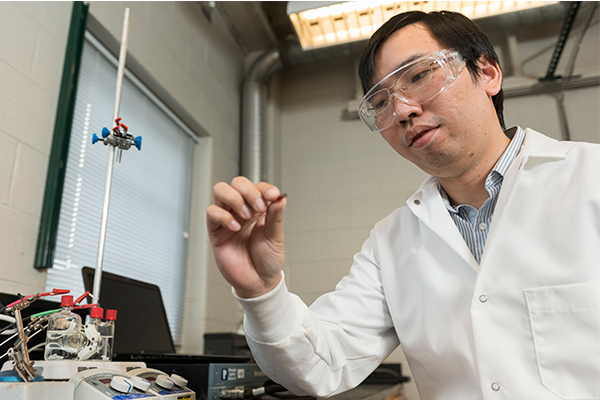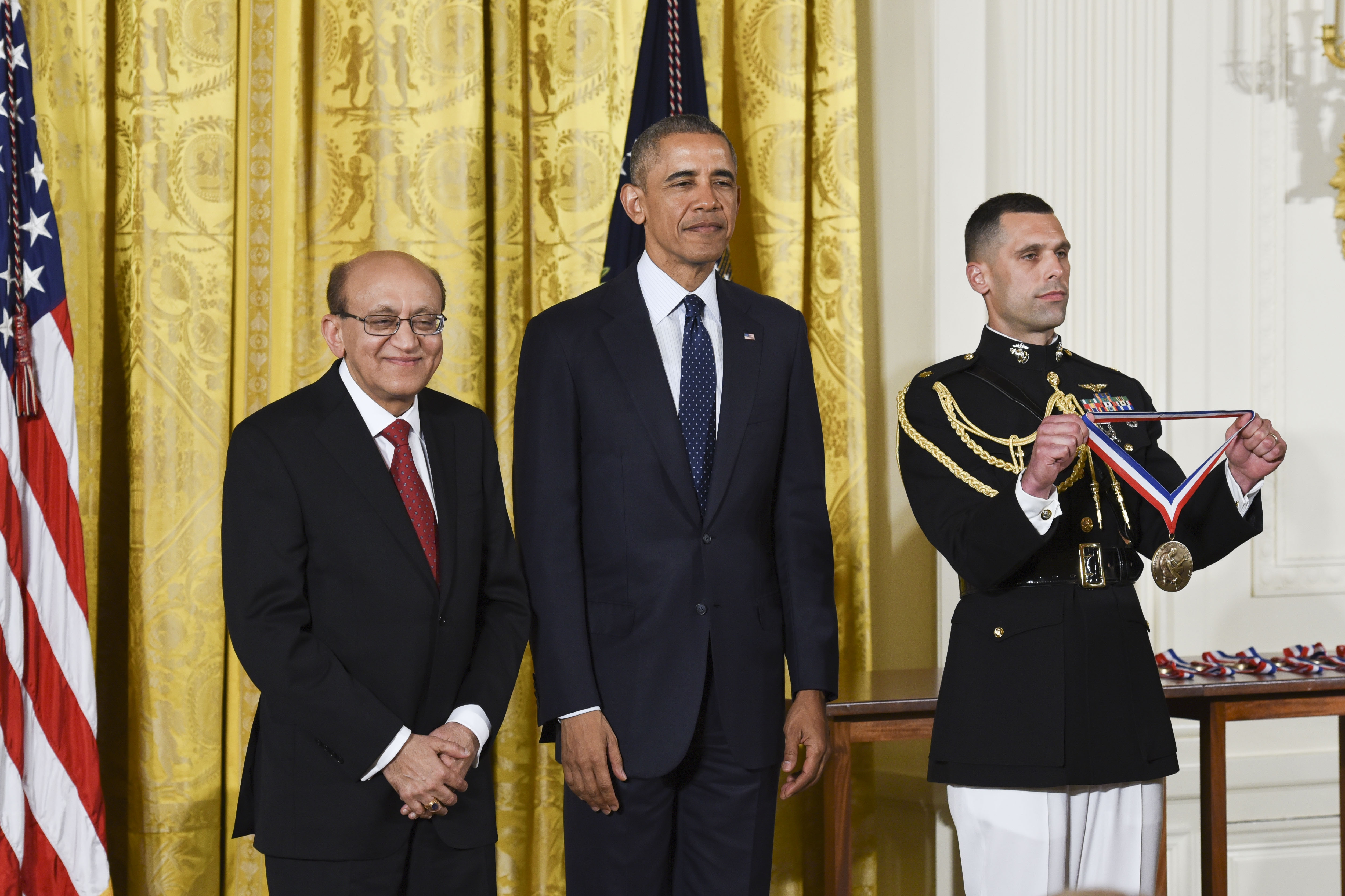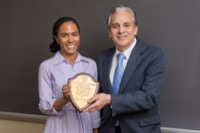
NSF Career Award
UD's Jiao develops new catalysts to convert greenhouse gas to chemicals
3:18 p.m., June 23, 2014--Feng Jiao, assistant professor of chemical and biomolecular engineering at the University of Delaware, has received a highly competitive Faculty Early Career Development Award from the National Science Foundation (NSF) to support his research to develop catalysts for converting greenhouse gases to useful chemicals.
Earlier this year, Jiao developed a highly selective silver catalyst capable of electrochemically converting carbon dioxide — a greenhouse gas — to carbon monoxide with 92 percent efficiency. He reported the findings in Nature Communications.
Honors Stories
National Medal of Science
Warren Award
Now, with more than $400,000 in new funding, Jiao’s research group is exploring the use of bimetallic catalysts for converting carbon dioxide (CO2) to carbon monoxide (CO).
“Exploring an area no one else has considered is exciting,” Jiao said. “It’s not just about how we can reduce greenhouse gas emissions, but also about how we can use advanced technology to convert something with a negative impact into something positive that can improve how society generates and consumes energy.”
Bimetals are materials composed of two separate metals that, when joined together, interact to produce properties not achievable with a single metal.
In previous work, Jiao used computational modeling to identify bimetallics for producing hydrogen fuel. He will use a similar approach to pinpoint combinations of metals useful for electrochemically reducing CO2 to CO.
“In practice, it is impossible to the screen hundreds or thousands of possible combinations in the laboratory,” Jiao said. “Computational modeling provides guidance on which elements are likely to work when paired together so that we can synthesize and test those combinations in the lab.”
He will begin by exploring combinations of copper-tin and copper-zinc.
“Based on our experience, copper is the only element that shows promise to convert CO2 to something else. We want to see if by adding a second element and tuning the material’s selectivity, can we activate the bimetal to convert CO2 to CO at a high rate — or even whether we can go beyond CO and create other chemicals, such as formate or methanol,” he said.
He also will develop new structural characterization methods and monitor the bimetal’s surface reactions in real time using X-ray absorption spectroscopy and electrochemical liquid transmission electron microscopy. This, Jiao said, will create experiential evidence to explain what’s happening on the metal’s surface.
“Computational work provides the theory, the tools provide experimental evidence and then, put together, they provide the means to design a better catalyst,” said Jiao.
As part of the work, Jiao will develop an education outreach program with the Delaware Museum of Natural History to help visitors between the ages of 3-10 understand solar energy concepts and the need for sustainable energy resources.
He also is working with Andrew Goudy, director of the Hydrogen Storage Research Center at Delaware State University, to improve participation of underrepresented students in science, technology, engineering and mathematics (STEM) through summer research internship opportunities in Jiao’s lab.
About the professor
Feng Jiao joined UD in 2010. In addition to his faculty role in chemical and biomolecular engineering, he is also affiliated with the Center for Catalytic Science and Technology.
His research interests include developing clean, sustainable and environmental friendly energy supplies by combining catalysis, materials science and electrochemistry to address current energy conversion and storage challenges.
Jiao’s previous work includes developing novel cathode materials to boost the energy storage of lithium-ion batteries, which are used in items ranging from laptops to electric cars, through a new synthetic method, ionothermal synthesis, for preparing lithium manganese phosphates with 3D nanoporous structures.
Article by Karen B. Roberts
Photo by Evan Krape








